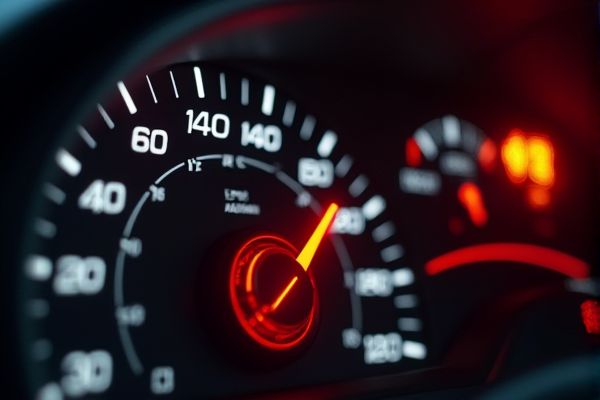
The Dodge Caliber's check engine light is a critical data-driven indicator that signals potential issues such as faulty sensors, emissions malfunctions, or engine misfires. Prioritizing maintenance through an OBD-II scan can reveal specific error codes--like P0171 or P0300--guiding targeted repairs for optimal performance and safety.
Dodge Caliber check engine light on meaning
Loose or Damaged Gas Cap
A loose or damaged gas cap can trigger the check engine light by causing fuel system leaks.
Faulty Mass Airflow Sensor (MAF)
A malfunctioning MAF sensor can affect engine performance and fuel efficiency.
Bad Oxygen Sensor (O2 Sensor)
A defective O2 sensor can impact fuel efficiency and cause damage to other components like the catalytic converter.
Catalytic Converter Issues
A failing catalytic converter can lead to emissions problems and decreased engine performance.
Vacuum Leaks
Leaks in the vacuum system can cause idling issues and affect engine performance.
Worn Spark Plugs or Spark Plug Wires
Old or damaged spark plugs and wires can lead to poor engine performance and potential damage to other components.
Ignition System Problems
Issues with ignition coils or spark plugs can cause misfires and engine stuttering.
Faulty Aftermarket Accessories
Incorrectly installed aftermarket parts can trigger the check engine light and cause other issues.
Low or Dead Battery
A weak or dead battery can prevent the car from starting and may trigger the check engine light if it affects other systems.
For car users
When your Dodge Caliber's check engine light turns on, immediately reduce your speed, check for simple issues (like a loose gas cap or low oil levels), and cautiously drive to a nearby, trusted mechanic or service center for a thorough diagnostic. Use an OBD-II scanner if available to retrieve error codes, prioritize scheduling a professional evaluation, and consult your owner's manual for any immediate troubleshooting steps.
Ignoring the check engine light
Ignoring the Dodge Caliber's check engine light can lead to undiagnosed issues escalating, ranging from minor sensor failures to serious engine misfires that compromise safety and fuel efficiency. As problems persist, you risk incurring higher repair costs, reduced performance, increased emissions, and potential long-term engine damage that might invalidate warranties or require costly system overhauls.
How to reset?
Using an OBD-II scanner, connect to your Dodge Caliber's diagnostic port to retrieve and erase stored fault codes--this resets the check engine light and confirms any issues have been accurately identified. Alternatively, disconnecting the negative battery terminal for 10 to 15 minutes can force a system reset, but be cautious as this method resets all onboard settings and may require reprogramming of the radio, clock, and other systems.
A Dodge Caliber check engine light diagnosis typically costs between $95 and $450, depending heavily on labor rates and initial diagnostic fees. If repairs are needed, especially for critical components like the oxygen sensor, catalytic converter, or spark plugs, total expenses can easily reach $600 or more, with actual costs varying based on the specific fault and local pricing.
Future prevention
Keeping the Dodge Caliber's engine in optimal condition--by adhering to the manufacturer's recommended maintenance schedule, routinely inspecting components such as oxygen sensors, mass airflow sensors, and the catalytic converter, and ensuring only high-quality fuel and oil are used--significantly reduces the risk of triggering the check engine light. Regular diagnostic scans to promptly address any detected error codes, along with timely tune-ups and system cleanings, further minimize potential malfunctions and extend engine longevity.
